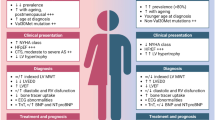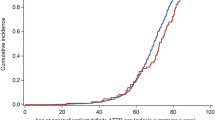Abstract
Misfolding and aggregation of mutated and wild-type transthyretin (TTR) can cause familial amyloid polyneuropathy (FAP) and senile systemic amyloidosis (SSA), respectively. In some populations, FAP onset seems to occur on average 2–11 years earlier in men than in women, and SSA appears to be a disease of elderly men. Most (95–100%) SSA patients described in the literature are men, suggesting that amyloid deposition in these patients may be sex hormone related. On the basis of gender-related differences in FAP onset, and on the almost exclusivity of SSA in elder men, we hypothesize that, sex hormones may increase TTR synthesis by the liver, and therefore, may contribute to amyloid deposition. In order to test this hypothesis, castrated female and male mice were implanted with alzet mini-osmotic pumps, delivering 17β-estradiol (E2) or 5α-dihydrotestosterone (DHT), or vehicle only, for 1 week. Sham operated animals were also included in the experiment. After hormonal stimulation, mice were euthanized under anaesthesia, and liver and sera were collected. The expression of TTR in liver, and the levels of TTR in sera in response to E2 and DHT were analysed by Real Time PCR and radioimmunoassay, respectively. Data analysis showed that, both hormones induced TTR transcription, which was concurrent with a consistent increase in the circulating levels of the protein. Taken together, all these data provide an indication that sex hormone stimulation may constitute a risk factor for SSA.


Similar content being viewed by others
References
Felding P, Fex G (1982) Cellular origin of prealbumin in the rat. Biochim Biophys Acta 716:446–449
Soprano DR, Herbert J, Soprano KJ et al (1985) Demonstration of transthyretin mRNA in the brain and other extrahepatic tissues in the rat. J Biol Chem 260:11793–11798
Herbert J, Wilcox JN, Pham KT et al (1986) Transthyretin: a choroid plexus-specific transport protein in human brain. The 1986 S. Weir Mitchell award. Neurology 36:900–911
Yamauchi K, Kasahara T, Hayashi H et al (1993) Purification and characterization of a 3, 5, 3′-l-triiodothyronine-specific binding protein from bullfrog tadpole plasma: a homolog of mammalian transthyretin. Endocrinology 132:2254–2261. doi:10.1210/en.132.5.2254
Yamauchi K, Nakajima J, Hayashi H et al (1999) Purification and characterization of thyroid-hormone-binding protein from masu salmon serum. A homolog of higher-vertebrate transthyretin. Eur J Biochem 265:944–949. doi:10.1046/j.1432-1327.1999.00825.x
Santos CR, Power DM (1999) Identification of transthyretin in fish (Sparus aurata): cDNA cloning and characterisation. Endocrinology 140:2430–2433. doi:10.1210/en.140.5.2430
Monaco HL, Rizzi M, Coda A (1995) Structure of a complex of two plasma proteins: transthyretin and retinol-binding protein. Science 268:1039–1041. doi:10.1126/science.7754382
Monaco HL (2000) The transthyretin-retinol-binding protein complex. Biochim Biophys Acta 1482:65–72
Episkopou V, Maeda S, Nishiguchi S, Shimada K et al (1993) Disruption of the transthyretin gene results in mice with depressed levels of plasma retinol and thyroid hormone. Proc Natl Acad Sci USA 90:2375–2379. doi:10.1073/pnas.90.6.2375
Buxbaum JN (2004) The systemic amyloidoses. Curr Opin Rheumatol 16:67–75. doi:10.1097/00002281-200401000-00013
Saraiva MJ (2001) Transthyretin amyloidosis: a tale of weak interactions. FEBS Lett 498:201–203. doi:10.1016/S0014-5793(01)02480-2
Saraiva MJ (2003) Cellular consequences of transthyretin deposition. Amyloid 10:13–16
Sousa A (2006) Genetic Epidemiology of Familial Amyloid Polyneuropathy. Sinapse 6:74–79
Alves M, Conceicao I, Luis ML (1997) Neurophysiological evaluation of sexual dysfunction in familial amyloidotic polyneuropathy—Portuguese type. Acta Neurol Scand 96:163–166
Bittencourt PL, Couto CA, Clemente C, Farias AQ, Palacios SA, Mies S et al (2005) Phenotypic expression of familial amyloid polyneuropathy in Brazil. Eur J Neurol 12:289–293. doi:10.1111/j.1468-1331.2004.00941.x
Ikeda S, Nakazato M, Ando Y, Sobue G (2002) Familial transthyretin-type amyloid polyneuropathy in Japan: clinical and genetic heterogeneity. Neurology 58:1001–1007
Kyle RA, Spittell PC, Gertz MA et al (1996) The premortem recognition of systemic senile amyloidosis with cardiac involvement. Am J Med 101:395–400. doi10.1016/S0002-9343(96)00229-X:
Ng B, Connors LH, Davidoff R et al (2005) Senile systemic amyloidosis presenting with heart failure: a comparison with light chain-associated amyloidosis. Arch Intern Med 165:1425–1429. doi:10.1001/archinte.165.12.1425
Labrie F, Luu-The V, Labrie C et al (2003) Endocrine and intracrine sources of androgens in women: inhibition of breast cancer and other roles of androgens and their precursor dehydroepiandrosterone. Endocr Rev 24:152–182. doi:10.1210/er.2001-0031
Lai Z, Colon W, Kelly JW (1996) The acid-mediated denaturation pathway of transthyretin yields a conformational intermediate that can self-assemble into amyloid. Biochemistry 35:6470–6482. doi:10.1021/bi952501g
Schwarzman AL, Gregori L, Vitek MP et al (1994) Transthyretin sequesters amyloid beta protein and prevents amyloid formation. Proc Natl Acad Sci USA 91:8368–8372. doi:10.1073/pnas.91.18.8368
Kohda K, Jinde S, Iwamoto K et al (2006) Maternal separation stress drastically decreases expression of transthyretin in the brains of adult rat offspring. Int J Neuropsychopharmacol 9:201–208. doi:10.1017/S1461145705005857
Tang YP, Haslam SZ, Conrad SE et al (2004) Estrogen increases brain expression of the mRNA encoding transthyretin, an amyloid beta scavenger protein. J Alzheimers Dis 6:413–420
Li MD, Kane JK, Matta SG et al (2000) Nicotine enhances the biosynthesis and secretion of transthyretin from the choroid plexus in rats: implications for beta-amyloid formation. J Neurosci 20:1318–1323
Puskas LG, Kitajka K, Nyakas C et al (2003) Short-term administration of omega 3 fatty acids from fish oil results in increased transthyretin transcription in old rat hippocampus. Proc Natl Acad Sci USA 100:1580–1585. doi:10.1073/pnas.0337683100
Ingenbleek Y, Young VR (2002) Significance of transthyretin in protein metabolism. Clin Chem Lab Med 40:1281–1291. doi:10.1515/CCLM.2002.222
Ingenbleek Y, Young V (1994) Transthyretin (prealbumin) in health and disease: nutritional implications. Annu Rev Nutr 14:495–533. doi:10.1146/annurev.nu.14.070194.002431
Pelletier G (2000) Localization of androgen and estrogen receptors in rat and primate tissues. Histol Histopathol 15:1261–1270
Pau CY, Pau KY, Spies HG (1998) Putative estrogen receptor beta and alpha mRNA expression in male and female rhesus macaques. Mol Cell Endocrinol 146:59–68. doi:10.1016/S0303-7207(98)00197-X
Sousa JC, Cardoso I, Marques F et al (2007) Transthyretin and Alzheimer’s disease: where in the brain? Neurobiol Aging 28:713–718. doi:10.1016/j.neurobiolaging.2006.03.015
Pfaffl MW, Horgan GW, Dempfle L (2002) Relative expression software tool (REST) for group-wise comparison and statistical analysis of relative expression results in real-time PCR. Nucleic Acids Res 30:e36. doi:10.1093/nar/30.9.e36
Hong-Goka BC, Chang FL (2004) Estrogen receptors alpha and beta in choroid plexus epithelial cells in Alzheimer’s disease. Neurosci Lett 360:113–116. doi:10.1016/j.neulet.2004.01.075
Belanger B, Belanger A, Labrie F et al (1989) Comparison of residual C-19 steroids in plasma and prostatic tissue of human, rat and guinea pig after castration: unique importance of extratesticular androgens in men. J Steroid Biochem 32:695–698. doi:10.1016/0022-4731(89)90514-1
Yoshida A, Matsutani Y, Fukuchi Y et al (2006) Analysis of the factors contributing to serum retinol binding protein and transthyretin levels in Japanese adults. J Atheroscler Thromb 13:209–215
Boonyaratanakornkit V, Edwards DP (2007) Receptor mechanisms mediating non-genomic actions of sex steroids. Semin Reprod Med 25:139–153. doi:10.1055/s-2007-973427
Vermeulen A (1991) Clinical review 24: Androgens in the aging male. J Clin Endocrinol Metab 73:221–224
Morley JE, Kaiser FE, Perry HM 3rd, Patrick P, Morley PM, Stauber PM et al (1997) Longitudinal changes in testosterone, luteinizing hormone, and follicle-stimulating hormone in healthy older men. Metabolism 46:410–413. doi:10.1016/S0026-0495(97)90057-3
Burger HG, Dudley EC, Cui J, Dennerstein L, Hopper JL (2000) A prospective longitudinal study of serum testosterone, dehydroepiandrosterone sulfate, and sex hormone-binding globulin levels through the menopause transition. J Clin Endocrinol Metab 85:2832–2838. doi:10.1210/jc.85.8.2832
Hall JE, Gill S (2001) Neuroendocrine aspects of aging in women. Endocrinol Metab Clin North Am 30:631–646. doi:10.1016/S0889-8529(05)70205-X
Davison SL, Bell R, Donath S, Montalto JG, Davis SR (2005) Androgen levels in adult females: changes with age, menopause, and oophorectomy. J Clin Endocrinol Metab 90:3847–3853. doi:10.1210/jc.2005-0212
Acknowledgements
I. Gonçalves and T. P. Quintela are recipients of fellowships from the Portuguese Foundation for Science and Technology-FCT, SRF/BPD/19337/2004 and SFRH/BD/21765/2005, respectively. C. H. Alves, and all the experimental work were supported by a FCT grant (POCI/SAU-NEU/55380/2004). We acknowledge Dr. J. E. B. Cavaco for carrying out orchydectomies.
Author information
Authors and Affiliations
Corresponding author
Rights and permissions
About this article
Cite this article
Gonçalves, I., Alves, C.H., Quintela, T. et al. Transthyretin is up-regulated by sex hormones in mice liver. Mol Cell Biochem 317, 137–142 (2008). https://doi.org/10.1007/s11010-008-9841-2
Received:
Accepted:
Published:
Issue Date:
DOI: https://doi.org/10.1007/s11010-008-9841-2




